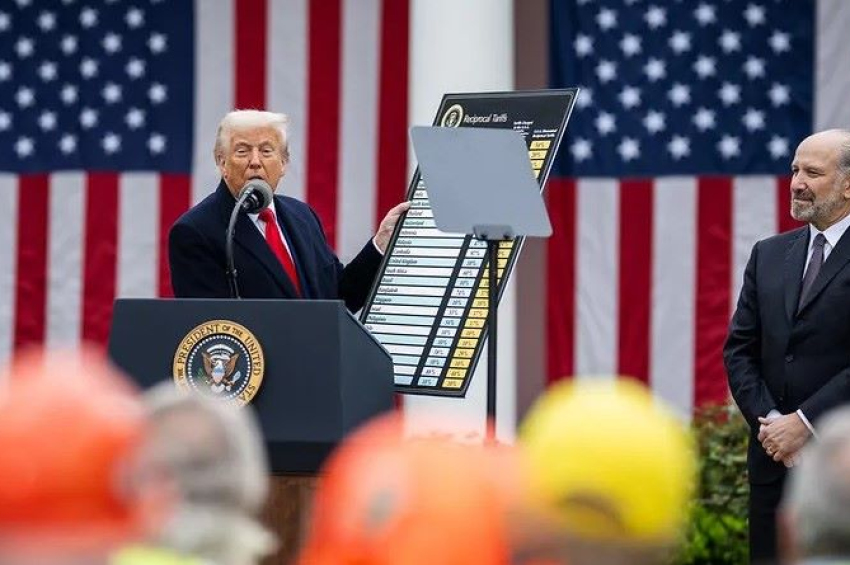Americans are “eating” Trump’s tariffs, not foreign exporters - Goldman warns
A fresh analysis by Goldman Sachs economists finds that U.S. consumers will bear the largest share of the costs from President Donald Trump’s sweeping import tariffs — contrary to the administration’s repeated claims that foreign exporters would foot the bill.
The Goldman note estimates that 55 percent of the tariff burden will be absorbed by American consumers this year, while U.S. businesses will absorb 22 percent, and foreign exporters only 18 percent.
“At the moment, however, U.S. businesses are likely bearing a larger share of the costs because some tariffs have just gone into effect and it takes time to raise prices on consumers and negotiate lower import prices with foreign suppliers,” the report reads.
More to read:
Trump is accused of insider trading and market manipulation amid tariff reversal controversy
That suggests a gradual shift: as tariff costs filter through supply chains, more of that burden may be passed on to end users (i.e. consumers).
Goldman’s projections also challenge the Trump administration’s narrative. The White House has insisted that foreign exporters will eventually bear most tariff costs.
As a spokesperson put it, “Americans may face a transition period from tariffs … but the cost would ultimately be borne by foreign exporters.”
Evidence from price trends
Independent research supports Goldman’s claim that U.S. firms and consumers, not exporters, are absorbing much of the burden.
A Harvard-led study tracking over 359,000 products and reported by Reuters found that since the enactment of the tariffs: the prices of imported goods rose by 4%, and the prices of domestic goods rose by 2%.
More to read:
Think tank predicts new Trump tariffs will generate $500-billion annual blows to US economy
Those numbers challenge the idea that exporters would eat the tariffs. Indeed, the study indicates that foreign companies have shown limited willingness to absorb the levies — instead passing costs into dollar prices.
Goldman warns that these dynamics could push inflation higher, complicating the Federal Reserve’s efforts to manage prices. Already, core personal consumption expenditures (a key inflation indicator for the Fed) have moved upward, in part because of tariff-driven price increases.
Moreover, the shifts in who bears costs may not be uniform. Businesses currently seem to be absorbing more, but over time, as tariffs fully ripple through supply chains, consumer price increases are likely to accelerate.
There’s additional unease looming in the retail sector. Trump has threatened tariffs of 100 percent on certain Chinese imports, effective November 2025. Retailers are bracing for this change, noting it could further strain costs for households already feeling the squeeze.
More to read:
[video] Trump just slapped penguins on Antarctic islands with tariffs
Not surprisingly, the Goldman analysis has sparked reactions from the Trump camp. The president criticized the firm’s forecasts, writing: “They made a bad prediction a long time ago on both the Market repercussion and the Tariffs themselves, and they were wrong, just like they are wrong about so much else.”
The new Goldman Sachs analysis and corroborating independent studies indicate that contrary to the administration’s messaging, American consumers and U.S. firms are carrying the brunt of Trump’s tariff program. Over time, the share borne by consumers may rise further, putting upward pressure on inflation and complicating monetary policy.






